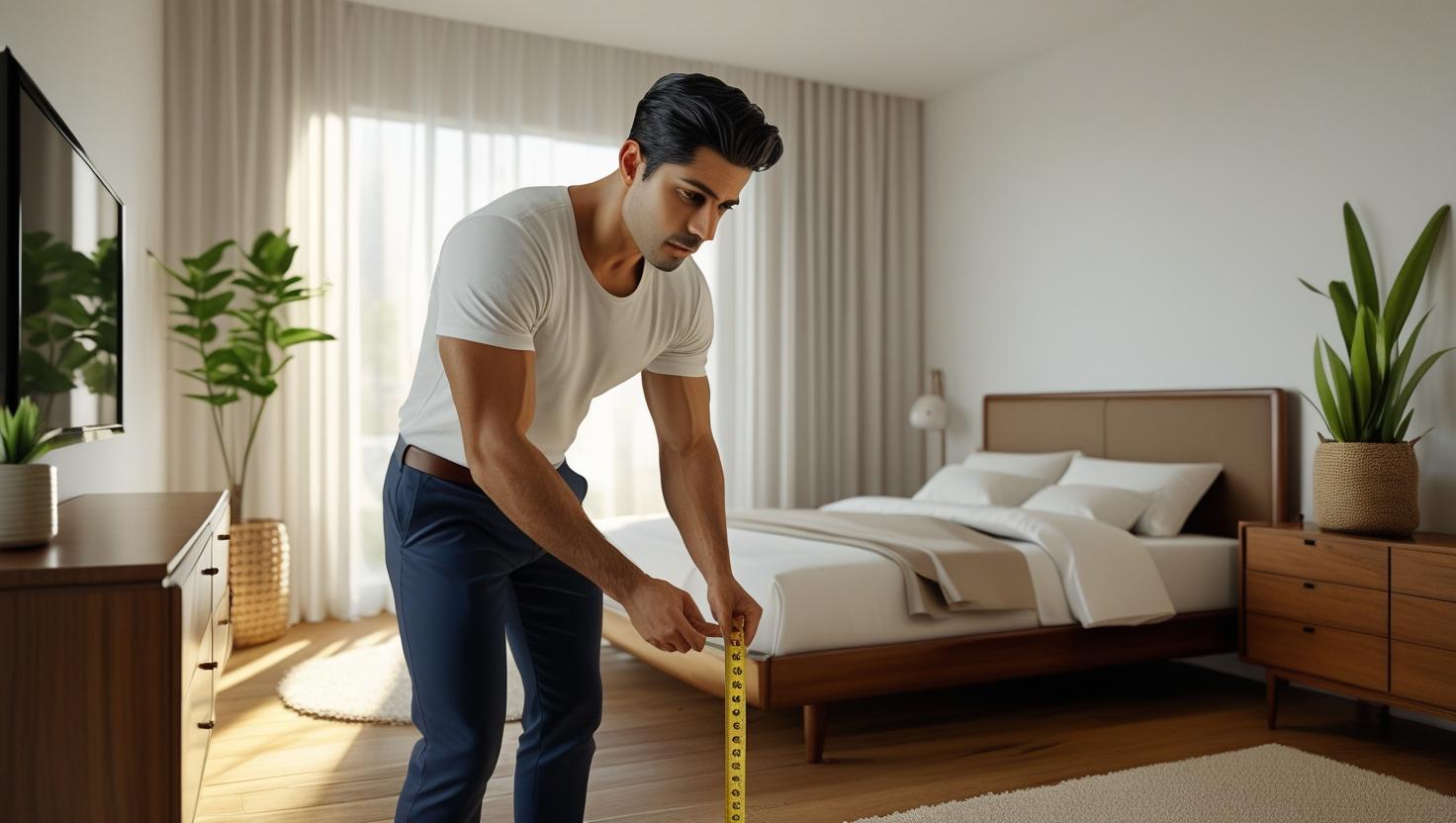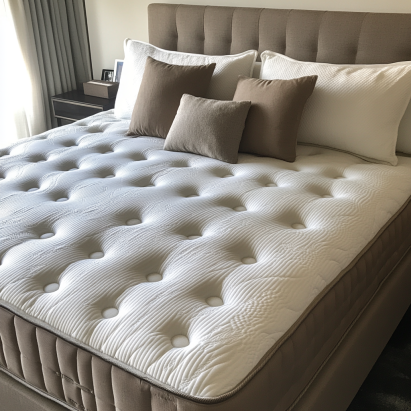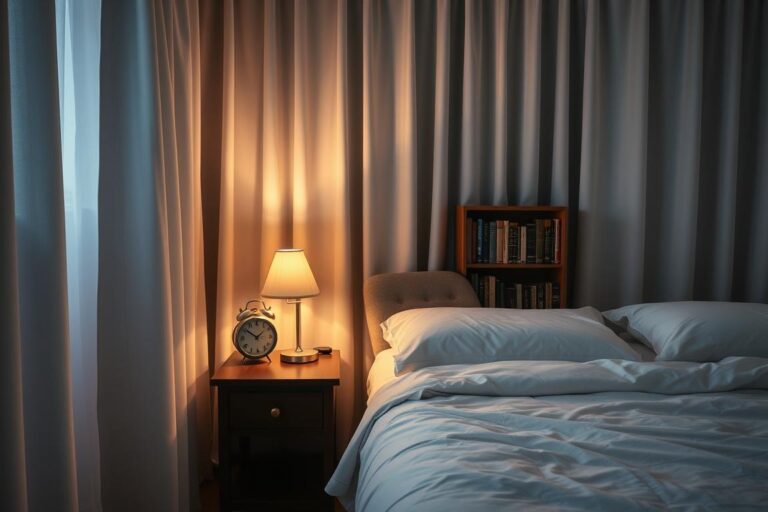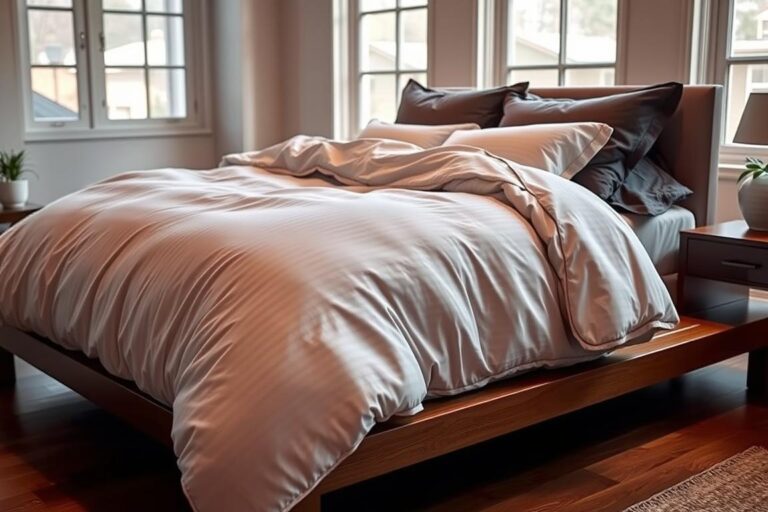Best Bed Width for Room
Finding the best bed width for room harmony is about balancing space, comfort, and style. With the right size, you can create a bedroom that feels open, functional, and inviting.
Key Takeaways
- Measure your room precisely to determine the best bed width for room comfort and flow.
- Use vertical storage and smart layouts to make small bedrooms feel larger.
- Choose a bed size that aligns with your lifestyle, whether solo, shared, or family-oriented.
1. Measure Your Room Accurately
Accurate measurements are the first step in finding the best bed width for room optimization. By knowing your room’s dimensions, you can ensure proper clearance around the bed and avoid overcrowding.
- Room Dimensions: Record the length and width of your space carefully.
- Furniture Layout: Take note of windows, doors, and built-in elements.
- Clearance: Maintain at least 24 inches of walking space on each side.
Room Size Guide
| Bed Size | Recommended Room Size (ft) | Clearance Space (inches) |
|---|---|---|
| Twin | 7 x 10 | 24 |
| Full | 10 x 10 | 30 |
| Queen | 10 x 12 | 30 |
| King | 12 x 12 | 36 |
See our Complete Guide to Full Size Bed Width for more insights.

2. Optimize Room Layout
The right layout enhances both the aesthetics and functionality of your room. Finding the best bed width for room balance often involves experimenting with placement. Explore bedroom layout ideas for inspiration.
- Against a Wall: Works best in long, narrow rooms.
- Centered Placement: Creates a symmetrical, spacious look.
- Corner Placement: Maximizes open floor area.

3. Match Bed Size with Lifestyle
Your lifestyle heavily influences which bed width is ideal. For example, couples or families need more sleeping surface than a solo sleeper. You can also learn from The Spruce’s guide to choosing the right bed size.
- Solo Sleepers: Twin or full sizes work for minimalists.
- Couples: Queen or king beds offer ample room.
- Families: King beds are perfect for kids and pets joining you.
Explore our guide on bed frames that pair well with various mattress sizes.

4. Utilize Vertical Space
When horizontal space is limited, vertical solutions can make your bedroom feel larger without sacrificing comfort.
- Tall Headboards: Add style and height to your room.
- Wall-Mounted Shelves: Free up valuable floor space.
- Loft Beds: Especially useful for compact rooms.
5. Multi-Functional Furniture
Integrating furniture with multiple uses helps maximize your floor plan around the best bed width for room efficiency.
- Storage Beds: Provide hidden storage underneath.
- Murphy Beds: Perfect for multipurpose rooms.
- Sofa Beds: Ideal for guest rooms or small apartments.
See our Top 10 Space-Saving Furniture Ideas for more inspiration.
6. Consider Bed Frame Design
The frame style you choose can affect how wide or bulky your bed appears, which influences the room’s overall feel. For more guidance, review Architectural Digest’s bedroom arrangement tips.
- Minimalist Frames: Create a sense of openness.
- Platform Beds: Offer a sleek, modern profile.
- Floating Beds: Enhance visual space by lifting off the floor.

7. Avoid Common Mistakes
Planning errors can make even a spacious bedroom feel cramped. Avoid these pitfalls when choosing the best bed width for room design:
- Overcrowding: Keep the number of furniture pieces minimal.
- Incorrect Proportions: Ensure balance between bed size and other elements.
- Ignoring Flow: Maintain clear paths for movement.
Additional Resources
- Full vs. Queen vs. King Bed Width
- Standard Bed Width Chart
- Avoiding Common Bed Width Mistakes
Expert-Recommended Reading
- Bedroom Layout Planning – Real Simple
- How to Arrange a Bedroom – Architectural Digest
- Choosing the Right Bed Size – The Spruce
Selecting the best bed width for room comfort and aesthetics ensures a restful, functional space. With the right strategies, you can enjoy a bedroom that suits your needs perfectly.
FAQ
- What is the minimum room size for a queen bed?
- For a queen bed, at least 10 x 12 feet is ideal to ensure proper clearance around the bed.
- Can a king bed fit in a 12 x 12 room?
- Yes, but be mindful of reduced space for other furniture. Aim for 36 inches of clearance if possible.
- Is a full bed suitable for two adults?
- It’s possible but tight for two adults. A queen or king is typically more comfortable.
- How can I maximize space in a small bedroom?
- Use vertical storage, multifunctional furniture, and choose a bed width that leaves adequate walking space.
Learn more in our bedroom layout guide.























